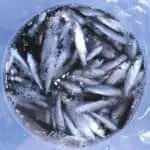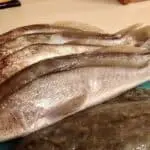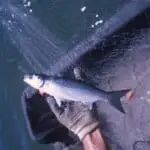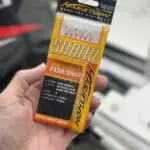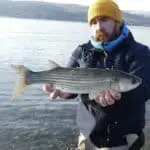Cast netting has traditionally dominated mullet fishing and is still a very effective and popular technique, especially when targeting finger mullet for bait…
But more people are interested in targeting mullet on hook and line, and for good reason!
Not only is catching mullet on hook and line a fun challenge, but they are surprisingly hard fighters and delicious when prepared properly.
In this article, I’ll tell you everything you need to know to catch mullet on hook and line, including which size hooks, the best baits and more!
This post may contain affiliate links. As an Amazon Associate, I earn from qualifying purchases
Table of Contents
- Can You Catch Mullet On A Hook?
- How to Catch Mullet on Hook and Line
- Best Baits For Catching Mullet
- Finding Mullet
- Frequently Asked Questions
- Final Thoughts
Can You Catch Mullet On A Hook?
To catch mullet on a hook and line, you need to first chum the area, and then downsize your tackle. Use a #8 or #10 hook, 6 lb test flurocarbon leader, and no weight. Small pieces of worm, shrimp or dough balls are great bait choices.
Mullet are nibblers, not biters, and will easily suck the bait off the hook without you noticing…
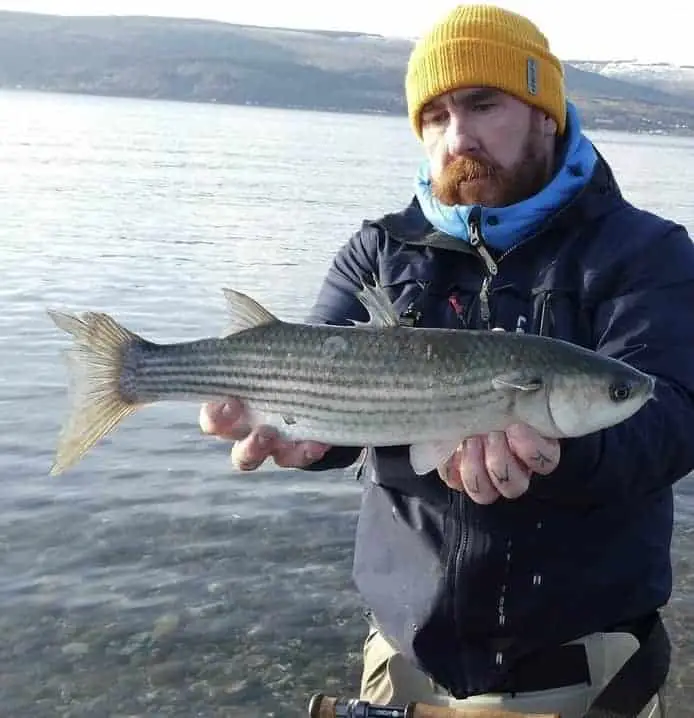
For that reason, mullet is not a ‘set it and forget it’ style of fishing…you need to pay extra attention for the slightest bite or nibble!
How to Catch Mullet on Hook and Line
To catch mullet on hook and line you should consider the following:
- Be stealthy and quiet. Fishing for mullet is the ultimate finesse fishing test.
- Consider pre-chumming an area to get mullet comfortable and feeding.
- Downsize your tackle, they have very small mouth and big eyes!
- Experiment with different natural and artificial baits to find what works best.
Mullet eat a wide variety of forage, including detritus, marine microoraganisms, and various plant and microalgae. Pay attention to the food sources in your area, and mimick those with your bait selection.
Its also important to note that mullet are found in both freshwater and saltwater environments. Therefore your bait selection will vary depending on where you are fishing.
In my area of Florida, mullet often congregate on shallow mud flats along mangrove shorelines. This is usually 1 to 4 feet deep, muddy bottom with sparse rocks and grass.
I start by chumming up an area with whatever I have on hand; fish scraps, oatmeal, potato flakes, bread crumbs etc. Allow the mullet to get comportable and feed.
After about 30 minutes, Ill cast my bait near the edge of the feeding mullet pod. Do not use a wieght (unless you have to), as it may spook the mullet.
You want your bait to naturally sink, and sit on top of the mud, sediment or grass so that swimming mullet will see it.
Now be patient…
Mullet mostly nibble on vegetation and hardly hunt, so you won’t catch them with flashy bait or bait with eyes like trout or snook lures. They will dart away at the sight of it.
If you dont get any bites after 5 or 10 minutes of them feeding around it, its time to switch. Try a different bait, or even a different sized hook.
Dont twitch your bait, dont move it, dont jerk the rod tip- just let it sit!
What Size Hooks For Mullet?
#8-#10 circle hooks or aberdeen wire hooks are best for mullet. Mullet have very small mouths and you need to conceal the point of your hook into the bait, so the smaller the better.
I recommend the #8 octopus circle hooks by Gamakatsu.
Best Baits For Catching Mullet
Because mullet are not picky and will feed on anything, a very wide spectrum of bait can be applied. Some anglers don’t even use bait, yet they report successful missions with dressed or naked hooks!
Effective natural bait for mullet include earthworms, bloodworms, nightcrawlers, shrimp, sandfleas, clams and even fish eggs.
Remember, think tiny! Small little pieces is all you need!
Some open-minded anglers use artifical bait for mullet like fatback bacon, fishbites, or cut pieces of plastic bass worms.
Your other reliable options are bread or oatmeal dough, which works better when mixed with fish oil to emit a scent.
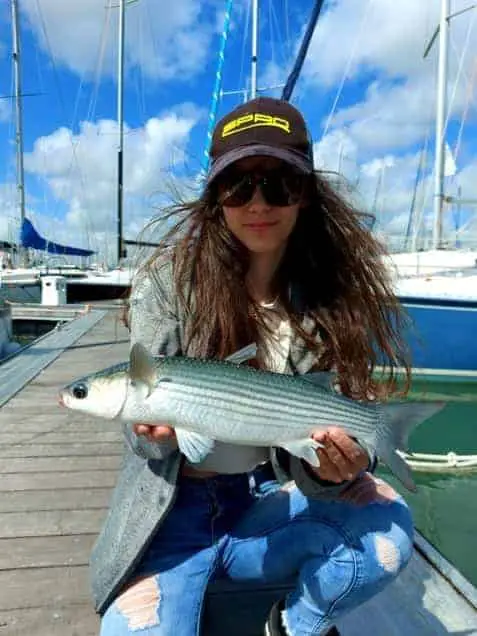
Chumming For Mullet
Chumming for mullet is extremely effective whether you are trying to catch them on hook and line or cast net.
Mullet chum can be anything from dog food, laying mash (chicken feed), rabbit and cattle pellets, fish pond pellets, to household crackers.
The trick to maximizing its pulling power is to create a paste with oatmeal that you can form into balls before dropping them into the water.
Make them just thick enough to get to the bottom before dissipating completely. If they are too thick, they take too long to dissolve and will get to the bottom before the magic happens, reducing your reach.
Keep your leader line and baited hooks in the chum bucket, allowing the chum to stick to it, then cast your rig right in the middle of the dissolving chum for extra action.
Best Lures For Mullet
Catching mullet on lures is very difficult, as they are not predatory in nature and most lures today illicit a strike from gamefish (like snook, tarpon or redfish).
However, there are a few lures on the market that will catch mullet if your patient. Check out my full article on catching mullet on lures here.
Hint: Think fly-fising!
Tips For Catching Mullet On Rod And Reel
- As much as you need the extra sensitivity, avoid stiff, powerful rods as they will cause hooks to pull out and the light lines to break. The mouth of a mullet is small and delicate and hooks are easily pulled out.
- A multi-hook mullet rig increases your chances of solid hookups and presents the opportunity to catch multiple mullet from a school at once. Many anglers fishing in the surf or from piers and jetties have success catching mullet on a sabiki rig.
- Mullet have sharp eyes and are easily spooked; therefore, stealth can not be overstated. Use light fluorocarbon leader lines (4- to 6-pound test) and remember this is finesse fishing!
- Wear polarizing glasses to spot mullet and setup your approach. Avoid using loud gasoline engines, instead try electric trolling motors, paddling or wading to get close.
Finding Mullet
To find mullet in your area, start by looking at the mouth of creeks, rivers, inlets and bays in your area.
Mullet often school in transition areas; for example just outside an inlet, on the edges of sandbars, or inside coves protected from predators.
If you live near brackish water, check around any nearby springs, culverts or drainage canals.
And dont forget to look for jumping mullet! That is the easiest and most visual indicator of mullet in the area. If you see one jump, there are probably 10 below the surface schooling nearby.
I have the best luck finding mullet in shallow water, usually 6 feet or less. They are harder to see in deep water and even trickier to get to bite.
Talk to other angerls too. Ask around! Commercial fisherman, crabbers and charter captains are on the water often and can usually point you in the right direction.
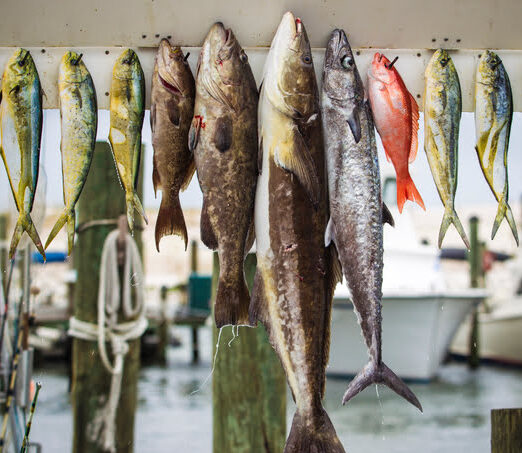
Do You Love Seafood?
Best Time To Catch Mullet
The best time of year to catch mullet is during the mullet run. This is the time of year when large schools of mullet migrate along coastal waterways to breed and spawn.
Where I live in florida, the mullet run occurs in August and September. This is not only a great time to catch mullet, but also a great time to catch the large gamefish following the mullet, such as snook, redfish, tarpon and sharks.
Make a call to your local fisheries biologist or bait and tackle shop and ask them when the mullet run is in your area.
The best time of day to catch mullet is dawn and dusk. During the early morning and late evening mullet are very active and the wind is usually calm.
But, dont overlook mullet fishing in the middle of the day. Sometimes when the sun is directly overhead and bright its much easier to spot feeding and schooling mullet.
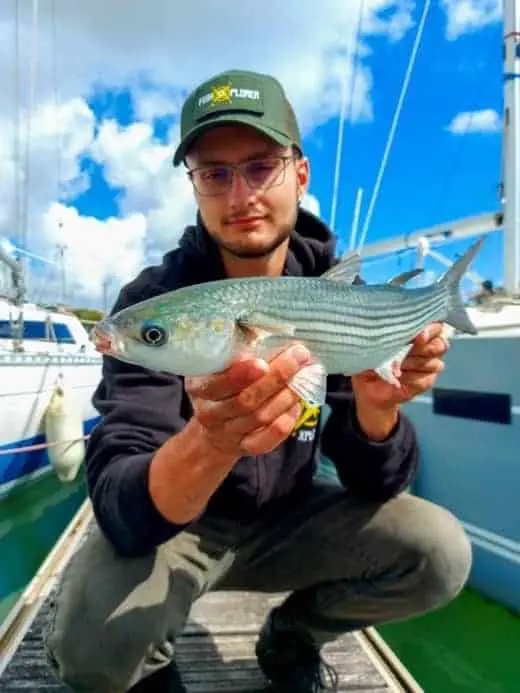
Frequently Asked Questions
Can You Catch Mullet With Bread?
Bread is one of the most popular baits for mullet because its inexpensive and effective. Bread can also be mixed with fish oil or chum, and is easily molded into a ball around the hook.
The downside of using bread for bait when mullet fishing is that it does not stay on the hook very long (it dissolves easily.
For that reason, using bread for mullet is best in calm and shallow waters such as creeks, canals and calm falts.
What is a Mullet Rig?
A mullet rig is not actually used to catch mullet. Instead, a mullet rig is when a finger mullet is rigged for bait, with a J-hook or treble hook using 12-18 inches of leader under a popping cork or float.
What Types Of Fish Eat Mullet?
Ah, the poor mullet. Nearly everything that swims eats this tasty and abundant fish!
Popular gamefish such as snook, redfish, tarpon, jack crevalle and spotted seatrout all eat mullet. Other species such as snapper, kingfish and sharks also eat mullet .
Even freshwater and saltwater catfish eat mullet!
That is one of the reasons why live mullet are one of the best bait choices when it comes to saltwater fishing.
Final Thoughts
Catching mullet on hook and line doesnt get the attention it deserves (especially in the United States)…
But if you are looking for a new challenge, give it a try!
Mullet are abundant, they taste delicious on a smoker, they can be caught all year long, and grow up to 8 pounds!
I hope the tips in this article help, enjoy.

Growing up in Florida, I’ve been surrounded by saltwater my entire life…and I love sharing my passion with others.
To learn more about why I started Saltwater Mecca, visit the ABOUT page.
Thank you for reading this article. Browse around & have some fun!

